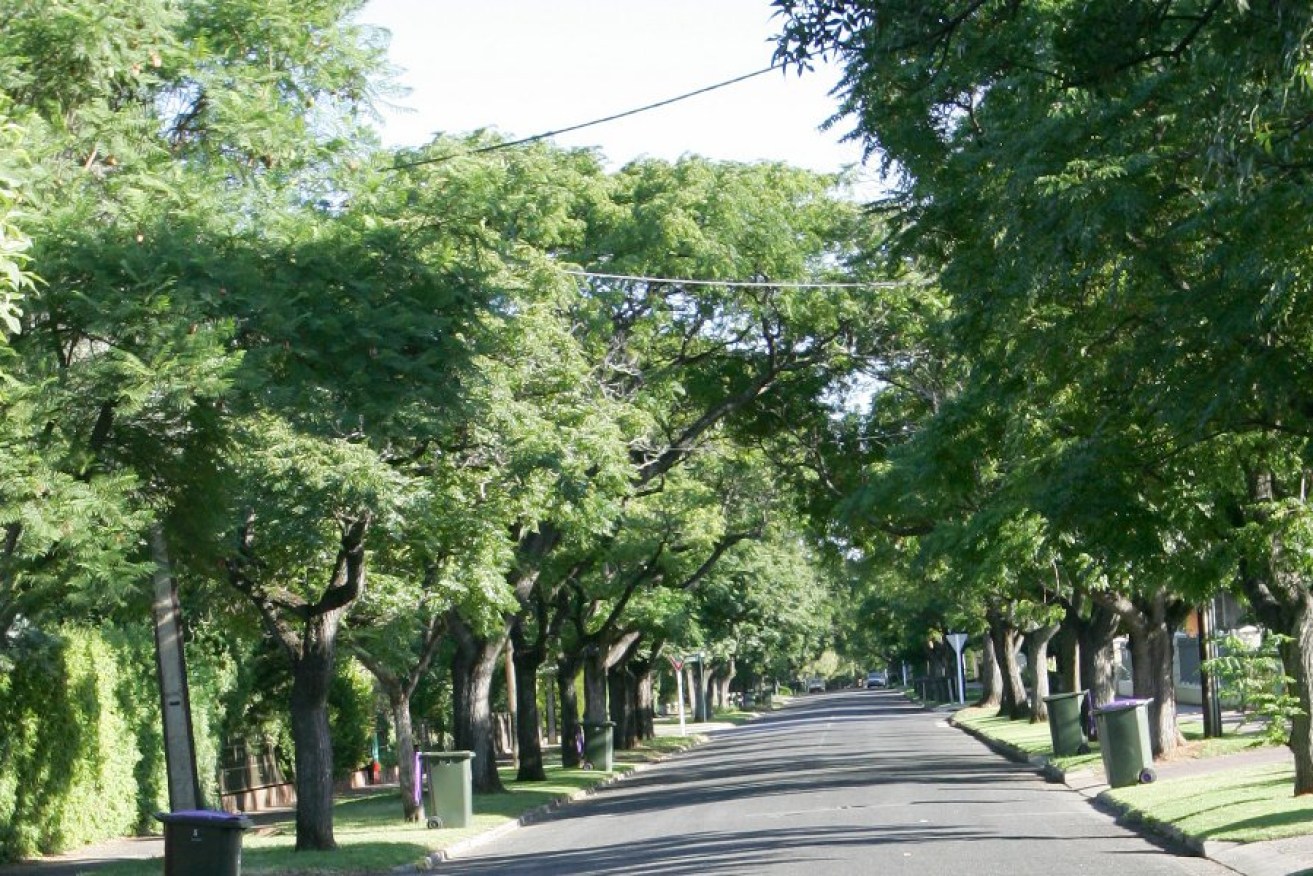If a tree falls in Adelaide, does anybody hear?

One of Adelaide's many tree-lined streets, this one in Toorak Gardens. Photo: InDaily
In suburban Adelaide, when a tree falls it is heard. And felt, and often blamed. Chopped up, removed, mulched and forgotten forever.
Yet sometimes the poor old tree isn’t to blame. It is usually the end game in a long story often involving a plethora of actions, faults and events that date back to the minute the tree was planted in the ground.
It’s so easy to get emotive over trees when storms create havoc like they did last week. I saw the damage and devastation in Hazelwood Park, and I must admit it brought a tear to my eye.
Unfortunately, the hysterical response is to call the tree lopper, close the parks, and get the trees out of our yard, out of our street, away from our parks and anywhere else there might be people … and that is after the event.
Emergency works are essential; so is safety, and preventing injury and death to people. The removal of dangerous limbs and trees is not the focus here – there is no argument with this premise.
However, we need to remember trees are living things. They filter our air, they create our breathable air; they need water, good soil and room to move, and they need a reasonable and stable climate to survive. I think we tend to forget some basic premises about trees and why they are critical to our world – both in their normal places (forests, coasts, deserts, rainforests) and their adapted homes (our backyards, streets, highways, parks and public spaces).
Trees are also risky things. Like humans, they are affected by changes in climate and removal of support systems; they get sick when neglected or deprived of their basic needs. This results in limb drop, leaf drop, falling over from destabilisation, and death.
As living things, trees are subject to the same forces as other living things. In a week-long heatwave, imagine how you would feel if you stood outside in the sun, didn’t drink water for a few days, then got battered by 120km/h winds.
While this comparison seems a little hysterical, so is the call to water down our world-leading tree protection laws. We need to remind ourselves of the suburban benefit of trees, acknowledging the risks and promoting good tree management practices. In our parks, streets, public spaces and private gardens, we need to consider better and more informed design, which includes species selection and placement of trees.
Trees do many things in our society. They provide shade, animal habitat and urban biodiversity; they also reduce the heat impact of development in urban areas (such as hot bitumen roads and rooves). Trees also help maintain and improve land values in residential streets, provide visual benefits (improving mental health), and create pleasant streets to walk in. In addition, they mitigate changes in our climate in the long term.
Occasionally, trees do create chaos: and as with humans, there are always many reasons why a tree might “fail”. When a falling limb or tree does cause our power to “fail”, it cops the blame. The onus is on society to reconnect the power, but there is less focus on the poor old tree being reconnected and cared for.
It is too easy to focus on the risks – which we do mostly to protect and insure ourselves. However, most councils have the task of mitigating tree risks, which is usually done via excellent reporting and management practices. Picture your suburb, then add the number of streets, then the number of trees in streets and parks – now you can see the scale of the challenge of assessing and maintaining the “risk” of trees in public spaces.
Trees are also a signpost to the past: past planting decisions, past maintenance practices, past establishment practices and past species selection. There are very few remnant trees in Adelaide, which means most trees have been planted by humans at some stage.
Instead of a reactionary change to the tree protection laws, the focus should be on improving the management and performance of our trees. For example, funding more undergrounding of powerlines, investing more in keeping our trees healthy via sound horticultural practices, improving services for more informed tree species selection, improving establishment practices and fostering better community ownership of our trees.
There is excellent research and field work on increasing a tree’s survival rate and establishment through capturing street stormwater, which also prevents street surface pollution from entering our creeks and rivers. However, more research, testing and funding is needed in this area.
More collaborative work involving landscape architects, arborists, engineers, horticulturalists, the nursery industry, infrastructure providers, service authorities, risk managers and key authorities will help ensure that our future streets, parks and public spaces are more effectively designed to cater for the needs of trees. This will bring benefits in terms of our long-term sustainability and a healthy society.
Imagine our suburbs, parks and streets without trees. It would be a sad city that doesn’t welcome these amazing, diverse, adaptable, beautiful and important trees.
Daniel Bennett is a registered landscape architect, and National Vice President of the Australian Institute of Landscape Architects




